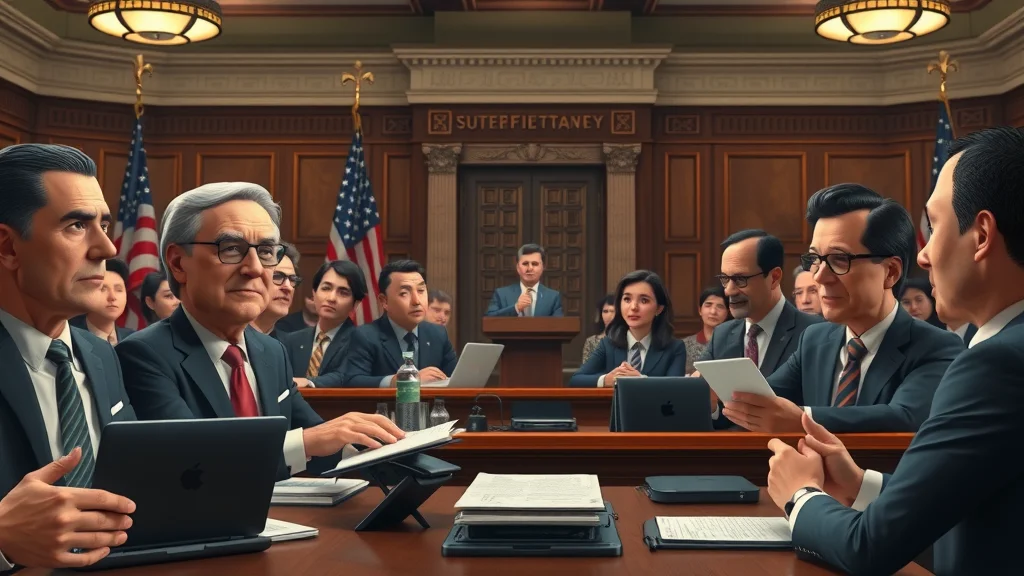Did you know the average tariff rate on key imports to the United States tripled during the recent trade war—directly causing historic surges in prices for everyday goods and disrupting global supply chains? For manufacturers, retailers, and consumers alike, understanding why your costs are rising starts with a close look at tariff and import prices. Today’s global marketplace is shaped by policy shocks, diplomatic power plays, and ripple effects across industries. Below, we break down the reasons behind these price increases and what you can do to navigate the volatility.
A Startling Surge: Analyzing the Latest Data on Tariff and Import Prices
The past decade has witnessed a dramatic escalation in tariff and import prices, impacting household budgets and bottom lines. According to data from the Bureau of Labor Statistics, imposed tariffs and retaliatory tariff measures since the onset of the trade war have contributed to U.S. import prices rising by as much as 20% in certain sectors—well above the annual inflation rate. This surge is particularly pronounced in electronics, steel, and agricultural products, where tariff rates have seen sudden percentage point jumps and triggered price increases cascading through supply chains. While policymakers anticipated targeted price hikes, the breadth and pace of the increases caught many off guard, especially for manufacturers dependent on global sourcing.
Complicating matters further is the speed with which these changes have occurred. Before the most recent rounds of tariff increases, most import-dependent businesses enjoyed relative price stability. Since then, every round of imposed tariffs—especially against key trading partners such as China and the EU—has ratcheted up costs, not just for importers but for end consumers. The impact is no longer isolated to select industries; higher import price tags on home appliances, vehicles, and electronics mean that Americans are feeling the squeeze on a daily basis, fueling broader consumer price inflation.

What You'll Learn About Tariff and Import Prices
- The current landscape of tariff and import prices in global trade
- How tariff rates impact consumer prices and business costs
- Why tariff and import prices are essential to economic policy discussions
- Expert opinions and projections for future changes
For those looking to take actionable steps and avoid unnecessary expenses, it’s worth exploring practical strategies to minimize the impact of rising tariffs. Discover how businesses can stop overpaying and optimize their import processes in this comprehensive guide to reducing tariff and import price burdens.
Understanding Tariff and Import Prices: Definitions and Economic Impact
What Are Tariff and Import Prices?
Tariffs are taxes imposed by governments on imported goods as they enter a country. These duties are applied to a broad range of products—anything from raw materials to finished consumer goods. Tariff and import prices, therefore, refer to the new, higher prices that result once these taxes are factored in. For importers and exporters, understanding effective tariff rates—those rates actually paid after accounting for trade agreements and duty exemptions—is critical for cost management. The import price is not just the sticker price from foreign exporters; it now includes all duties, charges, and additional costs associated with crossing borders in the current trade environment.
This distinction is important because the broader economic impact goes beyond importers. Whether it’s a U.S. manufacturer sourcing steel or a retailer stocking toys made in Asia, tariffs on imported goods push up input costs. These increases are frequently passed on through the supply chain, resulting in higher consumer prices across the board. Moreover, retaliatory tariffs—imposed in response to a country’s initial tariff increases—can multiply costs even further by affecting not just direct imports, but also exports, by making American goods less competitive in overseas markets.

How Do Tariff Rates Affect the Cost of Imports and Consumer Prices?
The tariff rate is a percentage applied to the value of imported goods. When the United States raises tariff rates—even by a few percentage points—the impact rapidly compounds. For example, a 10 percent tariff on $100 billion of electronics imports effectively increases costs by $10 billion for U.S. businesses. These additional expenses often appear as immediate price increases for retailers and consumers alike. According to industry insiders and data from the Trump administration’s trade war, every significant hike in tariff rates led to measurable increases in U.S. inflation, most visible in import-heavy sectors such as steel, agriculture, and consumer electronics.
It’s critical to highlight that not only do tariffs raise prices directly, but they also create pricing volatility. Multiple rounds of retaliatory tariffs, imposed back and forth between the United States and its trading partners, inject uncertainty into procurement and budgeting. Businesses are forced to either absorb the extra costs—cutting into profits—or pass them on to consumers, driving up the consumer price index. This chain reaction was particularly evident during periods of escalating tension between the United States and China, where targeted tariffs led to swift and wide-ranging effects on import price tags globally. The takeaway: higher tariffs make imports costlier and contribute to sustained price increases throughout the economy.
Watch this animated explainer for a simple breakdown of how tariffs translate into rising import prices and what trends experts expect to see in the coming years.
Trade War and Tariff Rate Increases: The Core Drivers of Rising Costs
The Trade War Landscape: A Brief Overview
The modern trade war between the United States and its major trading partners—especially China—has transformed the tariff landscape. The Trump administration initiated a rapid escalation of imposed tariffs in 2018 as part of a broader strategy to address perceived trade imbalances and intellectual property abuses. In response to these moves, key trading partners enacted their own retaliatory tariff measures, targeting American exports such as soybeans, cars, and electronics. This tit-for-tat strategy turned global trade relations into a high-stakes chess game, with the “winner” left less clear than hoped.
As both sides increased tariff rates, the rest of the world watched and waited. Many foreign exporters, facing declining access to the lucrative U.S. market, redirected their goods to other regions or absorbed losses through price cuts. But for U.S. businesses and consumers, the effect was immediate—a wave of price increases stemming from direct tariffs as well as secondary disruptions to the supply chain. The ongoing trade war, therefore, remains a primary driver of today’s elevated import price environment, and the effects persist long after the initial tariff battles have subsided.

Tariff Rates Before and After the Trade War
Before the trade war, U.S. average tariff rates on imported goods hovered between 1% and 3%—one of the lowest among major world economies. By mid-2019, tariffs on some Chinese goods hit 25%. Electronics, steel, and agricultural products faced particularly steep increases, with some categories’ tariff rates quadrupling overnight. Historical data show that these swift hikes raised the effective tariff on U.S. imports from all sources by several percentage points. The degree of change varied by sector, but the aggregate effect was unmistakable: a direct and substantial impact on import price tags across multiple industries.
Retaliatory tariffs magnified these effects. For businesses in agriculture, the loss of low-tariff access to critical foreign markets led to both falling export demand and a need to find new buyers in an increasingly competitive environment. In steel, manufacturers faced higher input costs and reduced competitiveness against foreign rivals. Taken together, the rise in tariff rates and retaliatory measures mark a dramatic shift in global trade dynamics—one that continues to raise prices for U.S. importers and consumers today.
Retaliatory Tariff Measures and Their Impact
"Trade wars are easy to start but far more difficult to win." — Prominent Trade Economist
Retaliatory tariffs are what happens when a trading partner responds to a tariff increase by imposing its own set of duties. Since 2018, the cycle of retaliation between the United States, China, the EU, and others has fundamentally altered global trade flows. These reciprocal increases do more than just raise prices: They introduce unpredictability, frustrate long-term planning, and have led some sectors to experience price increases up to 30% in a single year. For example, the imposition of tariffs on U.S. soybeans by China resulted in plummeting exports and forced many American farmers to pivot to alternative crops or markets. Similar patterns have played out in electronics and steel, with both sides enacting additional duties and quotas to shore up domestic industries.
For companies navigating this landscape, retaliatory tariff measures can quickly make established supply chains unsustainable. Importers dealing with sudden cost increases face the dilemma of either absorbing the loss or passing costs directly onto customers, impacting the consumer price of finished products. The never-ending tariff spiral underscores that the cost of tariffs—both imposed and retaliatory—rarely stops at the border; ultimately, businesses and consumers worldwide bear the brunt.
Case Study Table: Major Increases in Tariff Rate Across Sectors
| Product Category | Previous Tariff Rate | Current Tariff Rate | Top Affected Countries |
|---|---|---|---|
| Steel | 10% | 25% | China, EU |
| Electronics | 2% | 15% | China |
| Agriculture | 5% | 20% | Brazil, USA |
Discover how the cycle of imposed and retaliatory tariffs continues to shape global trade patterns and raise import prices around the world.
Presidential Policy Shifts: From President Trump to Current Day
President Trump's Tariff Policy and Its Ripple Effects
President Trump’s administration marked a major turning point in American trade policy, turning tariffs from a marginal economic tool into a headline-making strategy. The Trump administration’s approach was characterized by sudden and substantial tariff hikes, particularly targeting imports from China—with some sectors seeing increases from single-digit percentages to over 25%. These changes were justified as necessary to address trade deficits, protect American manufacturing, and rebalance economic relations with major trading partners.
The resulting shockwaves were immediate and far-reaching. U.S. companies reliant on global supply chains saw their costs soar virtually overnight. Sectors such as electronics, steel, and agriculture were thrust into uncertainty, and both business leaders and economists warned that these abrupt policy moves would prompt price increases across the entire economy. The “America First” rhetoric behind the policy changes did lead to some short-term gains for domestic producers, but the long-term outcome was a more expensive, less predictable trading landscape for all involved.

Have Retaliatory Tariffs Changed Tariff Revenue and Import Prices?
The rise of retaliatory tariffs has had a significant impact not just on tariff revenue, but also on the trajectory of import prices. Traditionally, an increase in tariff rates means more revenue for government coffers, since each imported good is now taxed at a higher rate. However, the effectiveness of this approach is mixed. As tariffs go up, overall volume of imports may drop, as businesses seek alternative sources or scale back their purchasing in response to higher costs. At the same time, retaliatory tariffs imposed by foreign governments shrink export demand for U.S. goods, resulting in a potential net negative for industries such as agriculture and machinery—both in revenue and in job security.
From a policy perspective, retaliatory tariffs often end up as a double-edged sword. While the United States may collect more in up-front duties, businesses and consumers ultimately pay the true cost: higher prices, disrupted supply chains, and increased market volatility. As global demand for U.S. exports wanes, both tariff revenues and economic confidence face downside risks, underscoring the delicate balance policymakers must strike between raising revenue and maintaining market stability.
Ongoing Tariff Policy Revisions: What Businesses Need to Know
"Policy changes have a profound, often lagging effect on import prices." — Supply Chain Industry Veteran
Today, the Biden administration and other world leaders continue to grapple with the ramifications of post-trade war policy. While some tariffs put in place during President Trump’s tenure remain, ongoing negotiations and potential revisions add new uncertainty. For businesses, this means continuous monitoring of trade announcements, government mandates, and sector-by-sector tariff schedules. Even minor regulatory tweaks can impact whether the effective tariff rate rises, falls, or stays the same for a given category of imported goods.
Industry experts agree that the lagging effects of policy shifts create challenges in cost forecasting and long-term planning. Because adjustments to the tariff rate and response to tariffs rarely yield immediate impacts, businesses must be strategic—considering the possible outcomes of every political development. As policy discussions continue both in the United States and abroad, ultimate stability remains elusive, making adaptability an essential trait for success.
Connecting Tariff and Import Prices With Consumer Price Inflation
Why Do Tariffs Raise Prices for Businesses and Consumers?
Tariffs are designed to make imported goods more expensive compared to domestic alternatives. But the reality is that supply chains are increasingly global; it’s rarely possible for importers and consumers to instantly switch to domestic options without incurring extra expense or sacrificing product quality. As a result, the cost of tariffs is most often paid by businesses that rely on those imports—either through higher procurement costs or reduced profit margins—and those costs are inevitably passed on to the end consumer in the form of price increases.
This is why surging tariff and import prices have become a chief driver of U.S. consumer price inflation since 2018. Items such as electronics, automobiles, and even groceries now bear the mark of higher tariff rates. According to the Consumer Price Index, each escalation in tariffs has contributed to measurable increases in overall inflation, complicating efforts by monetary policymakers to keep costs within target ranges. As the tariff increase cycle continues, upward pressure on retail prices is likely to remain a fact of life for American households for the foreseeable future.

Sector Focus: Effective Tariffs in Electronics and Agriculture
The real-world impact of tariffs is particularly striking in the electronics and agriculture sectors—two pillars of the global supply chain. Electronics manufacturers face multiple levels of new duties, from components sourced abroad to finished goods imported for retail sale. The result is that import prices for consumer tech jumped by double-digit percentages during the trade war, forcing price increases that were immediately felt by shoppers during high-demand periods like back-to-school and the holidays.
In agriculture, things can be even more volatile. Imposed tariffs on exports of soybeans, pork, and other staples resulted in immediate and steep revenue losses for U.S. farmers. At the same time, retaliatory tariffs from trading partners such as China and Brazil drove importers to shift sourcing or—where not possible—raise prices at the supermarket. In both sectors, the effective tariff rate remains dependent on ongoing negotiations, currency fluctuations, and government subsidies, making long-term pricing hard to predict.

Consumer Prices Index—Tracking the Effects of Tariff Hikes
The Consumer Price Index (CPI) serves as the U.S. government’s benchmark for inflation. During and after the trade war, the CPI registered above-average gains in sectors most affected by tariffs, such as household appliances, cars, foodstuffs, and clothing. Each time a new round of tariffs was imposed, analysts from the Bureau of Labor Statistics noted a jump in the index, indicating a direct link between government policy and consumer prices. Notably, price increases in appliances and electronics were frequently among the fastest-rising, thanks to their dependence on imported components.
Ongoing volatility in the CPI reinforces one core truth: the cost of tariffs and the timing of their implementation have ripple effects that touch nearly every corner of the consumer economy. As new tariff increases remain possible, ongoing vigilance is necessary for analysts, retailers, and buyers alike to avoid being blindsided by sudden price jumps.
List: Products Most Affected by Tariff and Import Price Increases
- Home appliances
- Automobiles
- Agricultural goods
- Consumer tech
- Textiles
Tariff Revenue and the Cost of Tariffs: Who Really Pays?
How Is Tariff Revenue Allocated?

When tariffs are collected by U.S. Customs and Border Protection, the resulting tariff revenue is directed to the federal budget, where it’s allocated for general government operations. In theory, increased tariff revenue should help offset national deficits or fund infrastructure and projects. However, this revenue often comes at the expense of higher overall costs in the economy—cutting into disposable income for consumers and profits for businesses. Studies from the Bureau of Labor Statistics suggest that government gains from expanded tariff revenues are offset by downstream losses in consumer spending and investment.
Moreover, the long-term allocation of tariff revenue is often a political decision, with priorities shifting based on current events, lobbying, and policy objectives. Some funds may be dedicated to economic relief programs, especially for sectors severely impacted by retaliatory tariffs or disruptions to traditional supply chains. Ultimately, the true value of collected revenue must be weighed against the wider economic impacts of price increases, export losses, and dampened economic growth.
The True Cost of Tariffs to Importers, Retailers, and End Consumers
Although tariff revenues initially benefit governments, the brunt of the cost is actually borne by importers (who pay the duties), retailers (who buy from importers), and ultimately, the average consumer. For instance, when a 25% tariff is imposed on electronics from China, the importers must pay it at the border—adding that cost to the import price. Retailers who purchase from those importers face higher wholesale prices and often pass them on to shoppers, resulting in price increases up and down the retail chain. In extreme cases, businesses unable to absorb the extra costs are forced to close or relocate operations, resulting in job losses and declining market competition.
For consumers, this means more expensive products and fewer choices. For businesses, it requires constant vigilance and adaptation: carefully tracking tariff schedules, revising supply contracts, and negotiating with both suppliers and buyers to minimize losses. The bottom line? The actual cost of tariffs extends far beyond the government ledger, impacting every stage from factory to store shelf.
Explore the full supply chain to see exactly who winds up paying for new tariffs, from importers and wholesalers to retailers and shoppers.
Global Impact: How Tariff and Import Prices Drive International Relations
Tariff and Import Prices as Tools of Diplomacy
Tariffs have always served dual purposes: protecting domestic industries and influencing foreign policy. Increasingly, modern trade wars show that tariff and import prices are wielded as key tools in diplomatic negotiations. By imposing or threatening tariffs, a nation can signal dissatisfaction, push for economic concessions, or retaliate against perceived injustices. The United States, China, and the EU have all used tariffs as levers to shape the global balance of power, with results playing out on the front pages of business news worldwide.
These moves have real-world consequences. As import-dependent countries scramble to manage rising input costs, alliances shift, and new economic blocs form around shared interests or common foes. Global supply chains are rerouted, new trade agreements drafted, and entire industries reshaped by the ebb and flow of tariffs and diplomatic strategy. Underlying it all is the reality that today’s global economy is more interconnected—and more fragile—than ever before.

Retaliatory Tariffs and Ongoing Trade Negotiations
"Every hike in tariff rates echoes through the halls of global diplomacy." — Trade Policy Analyst
Retaliatory tariffs specifically signal a nation’s willingness to match, or exceed, tariffs imposed against them. This cycle of escalation keeps negotiators at the table but makes long-term planning difficult for global businesses. Whether it’s the United States and China or other pairs of trading partners, each new round of imposed tariffs triggers ongoing responses and countermeasures—an expensive form of political brinksmanship with high stakes for manufacturing, farming, and technology sectors worldwide.
Behind closed doors, diplomats attempt to broker compromise, but ongoing policy changes mean businesses must adapt quickly to new realities. High-profile trade agreements may lower some barriers even as others are raised—making the global trading landscape more complex, and underscoring why it’s essential for companies to monitor negotiations and respond proactively to developments.
Real-World Impacts: Stories from Affected Businesses
Interview: US Manufacturer on Surging Tariff and Import Prices

One U.S. manufacturer shared a candid perspective on coping with skyrocketing tariff and import prices: “We’ve seen our steel costs almost double, and those hikes aren’t just absorbed—they’re reflected in our final product price. Every time a new tariff or retaliatory tariff is announced, we have to pivot our sourcing and renegotiate contracts. It’s stressful, and for midsize firms like ours, it can be the difference between profit and loss for the year.”
This case is not unique. Across the country, businesses are reporting similar stressors: margin compression, supply chain disruptions, and competitive disadvantages as rivals in less-affected regions gain ground. The message from industry leaders is clear—companies that adapt quickly will survive, but no one is entirely immune from the cost of tariffs or the uncertainty that surrounds them.
List: Strategies Businesses Use to Cope With Tariff Rate Volatility
- Supply chain diversification
- Negotiating new international contracts
- Short-term price adjustments
- Investing in domestic production
Future Projections: Are Tariff and Import Prices Set to Continue Rising?
Expert Opinions: Where Are Tariff Rates Heading Next?
Most economists and industry analysts agree that the volatility of tariff and import prices is likely to persist, at least in the near term. Factors such as ongoing geopolitical tensions, political leadership changes, and evolving trade priorities in the United States, China, and the rest of the world create an environment where sudden increases or decreases in the tariff rate remain possible. Some experts anticipate continued upward pressure as supply chains are reconfigured and domestic producers position themselves for advantage in a new era of economic nationalism.
Others are more optimistic, anticipating that new trade negotiations, multilateral agreements, or even breakthroughs in global diplomacy could reduce tariffs gradually over the next several years. However, the consensus is clear: businesses and consumers should prepare for a future marked by ongoing change, and policymakers must consider both the costs and benefits of aggressive tariff strategies.
Policy Proposals That Could Reshape Tariff and Import Prices

Several high-profile policy proposals are on the table. Some lawmakers advocate for targeted reductions in tariffs to support pandemic recovery and combat inflation, while others call for selective increases as a way to encourage reshoring critical industries. Proposals for “tariff stabilization funds” seek to help high-risk sectors weather sudden tariff hikes, while new trade agreements with the EU or Indo-Pacific countries could replace ad-hoc policy with greater long-term predictability.
Industry coalitions and consumer advocacy groups continue to press for clearer, more transparent tariff policies, citing the outsized impact that policy uncertainty has had during and after the trade war years. The direction policy takes next will depend on global economic conditions, domestic political priorities, and the outcome of ongoing diplomatic negotiations.
Quote: Industry Leader’s Insight on Tariff Revenue Trends
"Tariff revenues are only valuable if they don’t come at the expense of growth and competitiveness." — Leading Industry Executive
Key Takeaways: The Impact of Tariff and Import Prices on Your Bottom Line
- Tariff and import prices are increasingly volatile in the post-trade war world.
- Policy shifts by national leaders have deep and lasting effects on trade costs.
- Both businesses and consumers bear the brunt of rising prices.
- Staying informed is essential for strategic planning in global markets.
People Also Ask: Addressing Your Biggest Questions About Tariff and Import Prices
What causes rises in tariff and import prices?
Answer
Rises in tariff and import prices are primarily caused by government-imposed policy changes, such as new or higher tariffs on imported goods. These can be enacted to protect domestic industries, respond to international disputes, or as part of broader economic strategies. Additional factors include retaliatory tariffs from trading partners, shifts in global demand, supply chain disruptions, and changes in currency exchange rates. Each of these elements can independently or collectively contribute to sudden or sustained increases in the prices businesses and consumers pay for imported goods.
How do tariff rates impact consumer prices?
Answer
When tariff rates increase, importers pay more at the border for goods sourced from abroad. These higher costs are usually passed down the line: first to wholesalers, then to retailers, and finally to consumers. As a result, everyday products like electronics, clothing, or groceries become more expensive—contributing directly to consumer price inflation. In sectors dependent on imports, even a small percentage point uptick in tariff rates can lead to noticeable price increases in stores.
Who benefits from increased tariff revenue?
Answer
Increased tariff revenue primarily benefits the government, which collects the duties and can use the funds for public spending. However, the overall advantage is often offset by higher prices throughout the economy and potential losses in export markets due to retaliation. While some domestic industries may see temporary protections or gains, the broader economic effect is typically more mixed, with benefits diluted by the challenges faced by import-dependent sectors and consumers absorbing higher costs.
Can businesses avoid tariffs through alternative sourcing?
Answer
Many businesses attempt to minimize or avoid tariffs by diversifying supply chains, negotiating with new suppliers, or increasing domestic production. However, these strategies often come with new challenges—such as higher shipping costs, potential shortages, and the need to meet specific quality standards. While alternative sourcing may reduce exposure to particular tariffs, it doesn't always eliminate risk, especially when global trade tensions remain high and policy changes occur unpredictably.
Frequently Asked Questions on Tariff and Import Prices
- How are tariff rates determined?
- What is the difference between an imposed tariff and a retaliatory tariff?
- How do tariff and import prices influence supply chain decisions?
- Are there countries less affected by global tariff wars?
- What industries are most sensitive to tariff and import price volatility?
In Summary: My Take on Tariff and Import Prices and What’s Next
Opinion: Tariff and Import Prices as a Barometer for Global Economic Shifts
Tariff and import prices are more than policy levers—they’re a real-time measure of shifting global power and economic resilience. Their highs and lows tell the story of supply chain adaptation, policy missteps, and the enduring pressures of globalization. For businesses and consumers alike, these trends act as a warning signal, urging careful analysis and quick response.
Why Continuous Vigilance Is Needed Amidst Policy Change
Because tariff policies change with the political and diplomatic winds, stakeholders must remain vigilant. A well-prepared company—one that monitors trade news, analyzes exposure, and adapts strategically—can manage risk, while those caught off guard risk being left behind.
The Path Forward: Strategic Advice for Businesses
Stay informed, diversify your supply chain, and plan for volatility. As the global landscape continues to shift, those who make tariff and import price monitoring a key part of their business strategy will remain competitive, whatever comes next.

If you’re ready to deepen your understanding of how tariff and import price changes can affect your business strategy, there’s even more to explore. By examining advanced approaches to cost management and staying ahead of policy shifts, you can position your company to thrive despite global volatility. For a broader perspective on proactive measures and industry best practices, consider reviewing additional resources that highlight the latest trends and actionable insights in international trade. The journey to smarter, more resilient operations starts with knowledge—so keep exploring and stay ahead of the curve.
Get Ahead of Tariff and Import Price Changes—Subscribe for Industry Updates
Manufacturer don't miss out! Stay informed on global trade shifts-tariffs, reshoring, and supply chain updates could reshape your strategy. Subscribe to Global Trade News for Latest updates. Call 203-271-7991 today.
Understanding the complexities of tariffs and import prices is crucial for businesses and consumers navigating today’s global trade environment. The U.S. Department of Commerce offers an in-depth resource titled “Import Tariffs & Fees Overview and Resources,” which provides comprehensive information on tariff structures, calculation methods, and tools to determine applicable duties for various products. (trade.gov) Additionally, the Federal Reserve Bank of Atlanta has developed the “Tariff Price Tool,” an interactive platform that estimates the potential impact of specific tariff scenarios on U.S. consumer prices, helping users analyze both direct and indirect effects of tariffs on goods and services. (atlantafed.org) For those seeking to understand how import duties affect product prices, the “US Tariff Calculator 2025” offers a user-friendly interface to calculate the impact of tariffs on goods from major trading partners, including China, Mexico, Canada, and the European Union. (tariff-calculator.com) These resources are invaluable for staying informed and making strategic decisions in response to evolving trade policies.
 Add Row
Add Row  Add
Add 




Write A Comment